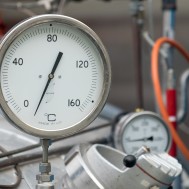When designing an o-ring for a specific application, it’s important to keep in mind the environmental factors your o-ring will experience. Environment plays a critical role in the functionality and lifespan of an o-ring. If an o-ring experiences temperature, pressure or weather conditions outside of its designated range, it will likely fail over time.
Extreme temperature affects every rubber material differently. Some rubber formulations are designed to resist high heat, while others remain flexible in the cold. To prevent your o-ring from distorting or failing under extreme temperature applications, there are a few things to keep in mind.
O-Ring Failure at Low Temperatures
Without proper material selection to resist low temperatures, o-rings exposed to extreme cold may experience:
- Shrinkage
- Brittleness
- Loss of flexibility
- Reduced compression set
Shrinkage and reduced compression set can lead to damaging leaks. Once a leak path is formed, it will remain in the seal indefinitely, even when heated back up to normal temperatures.
To prevent extreme cold from impacting your o-ring, designing the seal with compression set in mind is the first step. Since the compression set is often lowered in cold temperatures, the seal casing can be designed with continuous pressure on the o-ring, also referred to as squeeze. Applying squeeze of 30% or higher may prevent the o-ring from failing at lower temperatures.
It’s also important to ensure the right material is selected for extreme cold applications. Silicone, nitrile (Buna-N), fluorosilicone and ethylene-propylene (EPDM) all offer low-temperature resistance.
O-Ring Failure at High Temperature
Over time, extreme heat is known to degrade rubber seals physically and chemically, leaving lasting damage to the o-ring. High temperatures can impact rubber seals by causing them to:
- Harden and reduce elasticity
- Swell
- Permanently deform
- Change in volume and compression set
These symptoms can have a lasting impact on the o-ring, causing permanent changes in the gland that may ultimately lead to seal failure.
To prevent extreme heat from affecting your o-ring, choose an o-ring material with a low compression set. The lower the compression set, the better the material will resist permanent deformation. Additionally, check the gland design to ensure your o-ring is not over-compressed or experiencing excessive friction. Friction will cause the seal face to produce higher amounts of heat, which may be too much for your seal to handle.
Not all rubber materials are the same. When selecting rubber for your high temperature application, fluorocarbon (Viton®), silicone, fluorosilicone and TFE/P (AFLAS™) offer the greatest resistance. Take a look at our Material Selection Guide to learn more about heat and cold resistant materials.
Have a question about temperature in your o-ring application?
Ask an engineer today.
